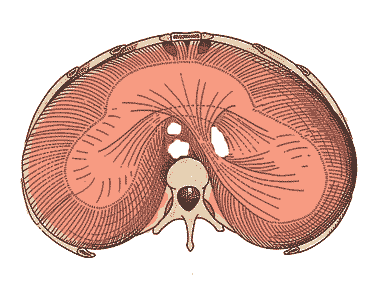GERD -
Hiatal Hernia - Regurgitation

Signs or Symptoms
Heartburn, pain on swallowing, difficult swallowing, coughing, wheezing,
asthma, tooth enamel decay, gingivitis, bad breath, throat soreness,
laryngitis, and hoarseness
Description
Stomach acids come back up into the esophagus and into the mouth irritating
these structures.
Causes
Poor functioning of the valve between the stomach and the esophagus, hiatal
hernia, slow stomach emptying and decreased salivation are some of the most
common causes
Standard treatment
Medications to reduce stomach acidity and in severe cases surgery to reduce the
size of the opening between the stomach and the esophagus
AK Approach
The diaphragm is the large muscle that separates the thorax from the abdomen.
It wraps around the esophagus and is the major support structure that can be
strengthened and used to help prevent the reflux. Testing is done to determine abnormal
functioning of the diaphragm. Then treatment is directed at normalizing its
function. This is followed by exercises to strengthen any weak structures.
Nutritional work to augment the body’s own natural anti-inflammatories as well
as stimulating healing of the damaged structures is undertaken. Balancing of
any imbalances in the normal acid – alkaline systems of the body are also
tested for and corrective measures undertaken. Other lifestyle modifications
are used to prevent or minimize exacerbating the condition. A specific program
for your needs is created.


